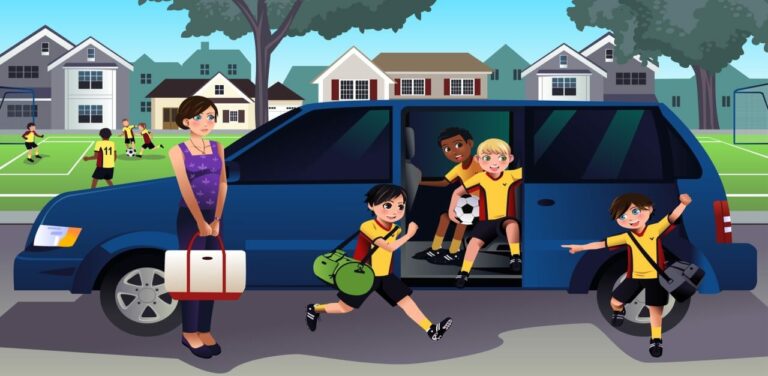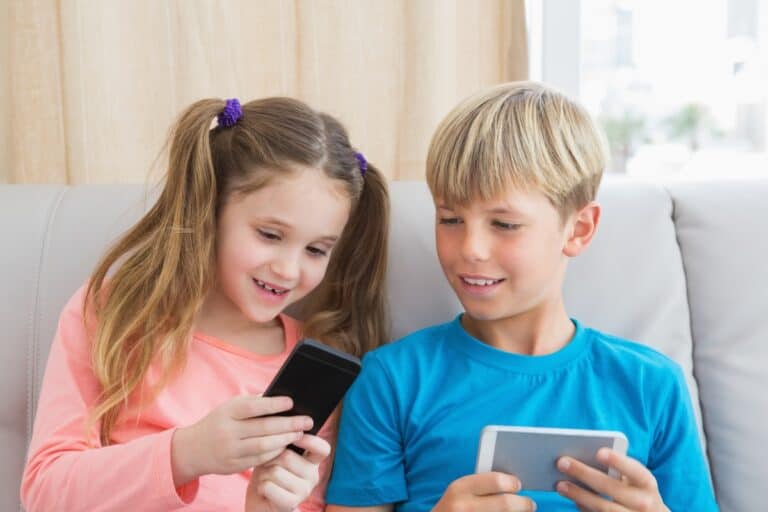NFTs for Kids: What Parents Need to Know
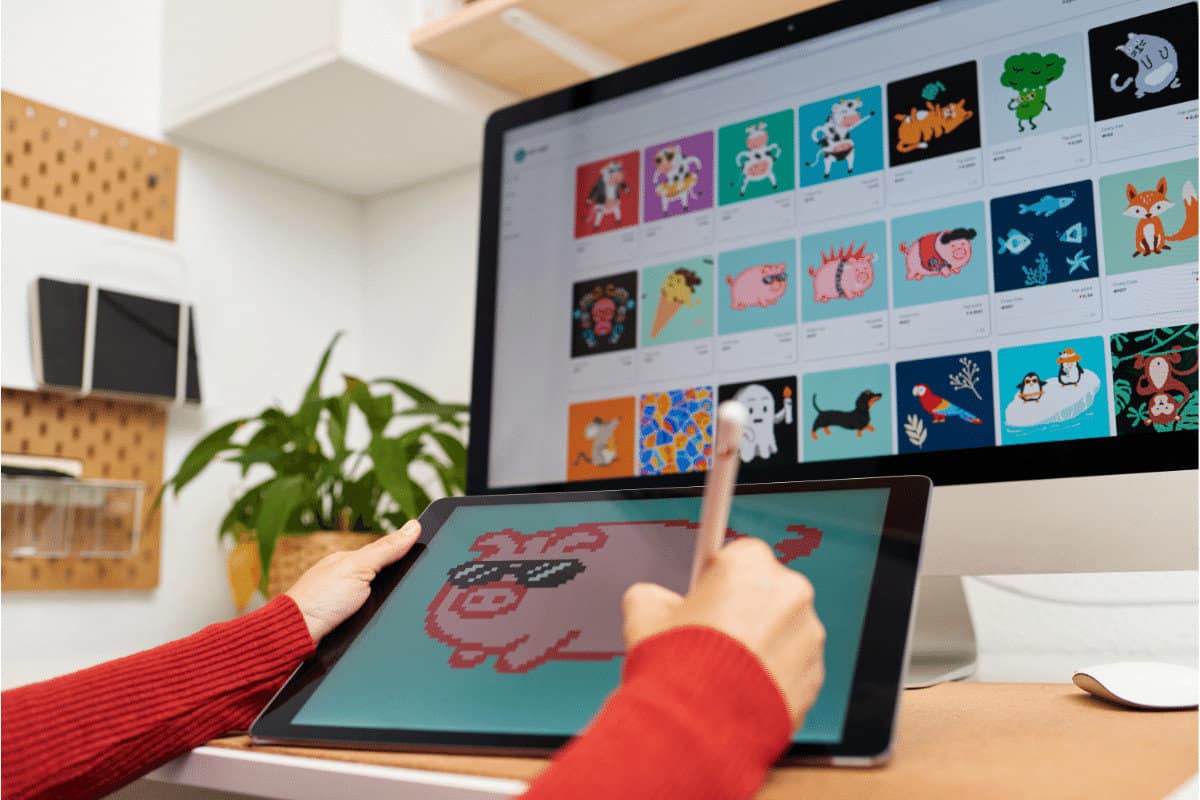
If your elementary school student seems to have a better understanding of Web3 technology than you do, you’re not alone! Read on to learn all about NFTs for kids so you can engage with this burgeoning technology.
My First NFT for Kids
I bought my first-ever non-fungible token (NFT) for $2.99 at a Walmart in Covington, Virginia. I wasn’t entering Web3 through the typical detached tech channels in San Francisco or Seattle. It was a classic Walmart with just about anything you could imagine, including a section dedicated to Dolly Parton greeting cards. The NFTs were directly next to the aisle selling slime and Barbie Dolls in an LOL Doll package, like baseball or Pokemon cards.
And here, in the heart of the Appalachian mountains, surrounded by God Bless America T-shirts, I took the plunge into this emerging technology. Without a Bored Ape in sight.
This purchase represents a classic disconnect between new technology and people’s perception. As parents, we tend to assume that if we don’t understand new technology, our kids won’t either. But many companies, including Lego, Fortnite, or MGA toys (producers of LOL Dolls), are already marketing new offerings to your kids.
So what exactly are non-fungible tokens (NFTs), and why are some companies selling NFTs for kids? Read on to learn about this burgeoning industry and how you and your family can navigate this new technology.
What Are NFTs?
NFTs are digital assets that run on a blockchain network. Does that clear things up for you? Me neither– so let’s break it down.

Digital assets include anything that exists in a digital (rather than physical) form and include usage rights. So if you bought the NFT of your favorite book, you own it across all digital platforms. You wouldn’t have to buy a different copy for your Kindle AND your iBook; you’d just have one.
These can include videos, audio files, documents, spreadsheets, graphics, or images. In the case of NFTs, we usually think of graphics, but they could be much more encompassing, like music files, or the deeds to your house.
These digital assets run on blockchain technology, which is a distributed ledger technology (DLT). At the most basic level, each block contains a ledger or a list of records. These blocks are connected through a digital network.
This configuration of data ensures that the information stored is secure, immutable, and decentralized. So ideally, if you want to store a legal document in a blockchain, nobody could change it or hack it. It could also exist independently of a larger organizational structure.
In the context of NFTs on a blockchain, you would own your NFT in a secure block. You could also sell it or transfer ownership to another party on the network. But because it’s decentralized, other parties on the network validate the transaction. In most other systems, you just have one central authenticator, like a bank.
How Much Do NFTs Cost?
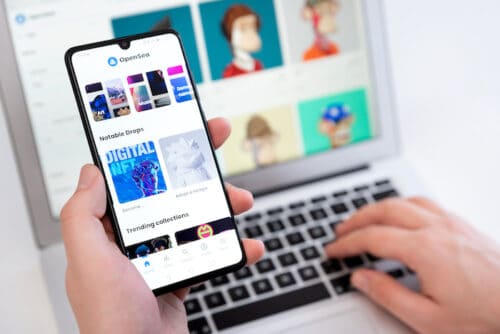
We tend to hear about the NFTs that cost exorbitant amounts of money. But many NFTs, like the ones I bought at Walmart, are only worth a few dollars.
Some NFTs representing items could be even more expensive than the real-life version. For example, a Gucci couture dress could cost around $10,000. But in March of 2022, some of the Gucci Grail NFTs were valued at over $2 million USD. While you can easily be swept up in the hype, there’s been a lot of recent market volatility. So sticking with budget-friendly and kid-friendly NFTs is probably the best way to expose your kids to this marketplace.
How Do I Buy NFTs for Kids?
Most of the time, you would need to buy a digital wallet designed for cryptocurrencies, like Coinbase. You use FIAT currency, like the US dollar, and purchase Bitcoin, Ether, HBar, or another currency of your choice. From there, you would probably buy your NFTs on OpenSea, the largest NFT marketplace. Most NFTs today run on the Ethereum blockchain.
When it comes to NFTs for kids, however, most companies value privacy and anonymity, so they often have additional security measures in place. The LOL Doll NFTs, for example, run on the Polkadot blockchain. But because they’re designed for kids and compliant with existing regulations, you can purchase your LOL Doll digital tokens or “bling” directly through the game.
Do Kids Make NFTs?
In addition to the NFTs designed for kids, some child artists have even been creating and getting paid for their own collection of digital collectibles. 13-year-old NFT artist Nyla Hayes has a Long Neckie collection worth about 80 ETH, or nearly $200,000 (down from a peak closer to $500,000 in November). 12-year-old Benjamin Ahmed’s Weird Whales collection is now worth about 1.9K ETH or over $3 million USD. Even 7-year-old Emilio Barrera has made thousands from his NFT art.
Of course, these digital artists, who have made real money for their families, are more the exception than the rule. So even though they can create unique works, most NFT artists don’t have this level of financial success. But if your kids have the creative interest and aptitude, it’s a unique space to explore.
Who Are Some of the Key Players Developing NFTs for Kids?
Investment and technology in the development of NFTS for kids continue to explode. There are several NFTs that would appeal to kids, like Pokemon or DC Comics, even though they’re more designed for adults to purchase. Here are two companies developing NFTs designed for child consumption.
It’s important to note that both of them use their core business competencies to drive NFT sales, so they’re easier for kids to grasp. They’re not trying to start with something overly aggressive or foreign to them. Also, both of these companies have secure ecosystems that protect kids’ identities.
1. Zigazoo
Yes, even your preschooler can get in on the NFT action. Zigazoo, the kids’ social media app, has launched these offerings on the Flow blockchain platform. Many of the initial offerings, including those by 13-year-old artist Nyla Harris, sold out quickly, but Zigazoo has plans to release more NFTs for kids, including CocoMelon, Baby Shark, and Blippi.
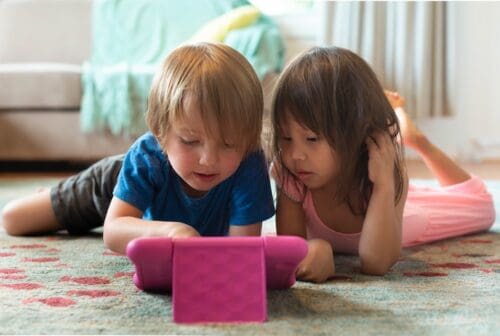
In addition to her Long Neckie collection, Harris released a Long Neckie Kids NFT collection specifically for the younger audience. These are significantly cheaper than her other creations, and those who purchase one will gain access to Zigazoo’s core community. This initial launch also involves a contest for young artists and aspiring NFT creators to encourage more young people to explore Web3.
Future NFT drops will build upon Zigazoo’s existing infrastructure. Kids can already earn Zigabucks by completing challenges within the network. After the initial Genesis launch, Zigazoo will offer packs of themed NFT cards starting at around $5.99.
2. MGA and Ioconic LOL Doll NFTs
Nothing I say could explain this more effectively than this YouTube video. While this NFT ecosystem was safe and secure for kids, there were still strong consumer undertones, which you’ll find in many video games designed for kids.
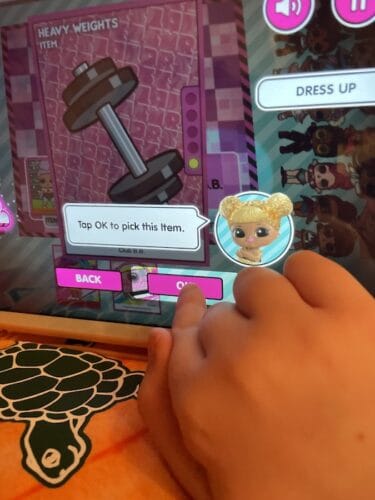
These NFT cards were released in late 2021, but as of June 2022, they’re on clearance for $1.99, down from $2.99, so I don’t think the game will take off in its current iteration. I’d also be surprised if most consumers downloaded and saw the NFT. Many users just like the physical trading cards, rather than using the virtual game and buying LOL Doll “Bling.”
When I entered the LOL Web3 world, it didn’t seem that different from a traditional video game, though it was slower and clunkier. I would be surprised if most of the target users wouldn’t be a bit frustrated by this experience.
In addition to its game on the Polkadot blockchain, LOL Doll has another NFT collection that launched on the Quidd marketplace in March. This one has an older target audience, and prices range from seventy-five cents to five dollars, so they’re definitely an NFT bargain!
NFTs for Kids: Present and Future
Maybe you’re a pro adding priceless images to your digital art collection. Or you might just dip your toes into the marketplace using digital currency. Regardless of your NFT goals, or your kids’ NFT goals, it’s helpful to have a view of this vastly evolving landscape.
Right now, so much of Web3 is clunky, confusing, and not user-friendly. So for this technology to become part of everyday life for the average family, it needs to be simpler. That’s why NFT launches like those from Zigazoo and MGA are so interesting to observe. Lowering the barriers to entry, and creating secure spaces for kids to engage in Web3, might show promise of similar Web3 benefits for adults.
Most kids are far more tech-savvy than their parents and grandparents, so they’ll be more receptive to emerging technologies. Whether they create and make millions from original NFTs or just purchase one to play a new game, this technology will become increasingly sophisticated and ubiquitous in the years to come.
